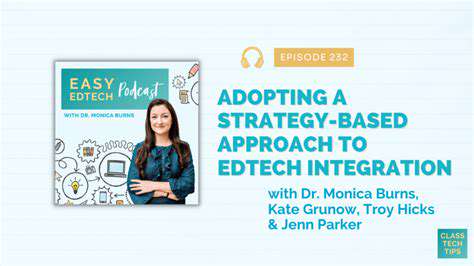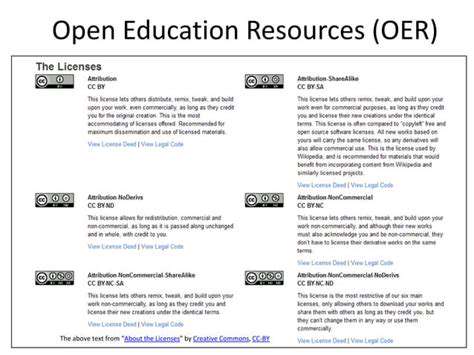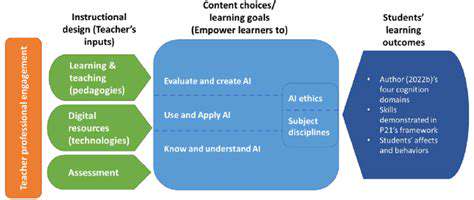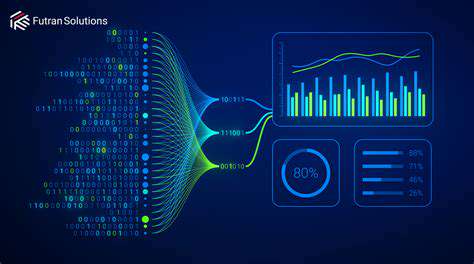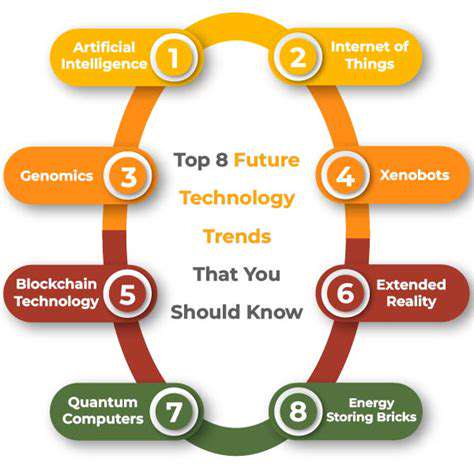The ROI of EdTech Investment: Proving Value and Impact
The Cost-Benefit Analysis of EdTech Adoption
Understanding the Investment
Educational technology (EdTech) investments, while promising, often require careful consideration of their potential return on investment (ROI). A thorough cost-benefit analysis is crucial to determining if the chosen EdTech solutions align with the institution's strategic goals and financial capabilities. This involves assessing not only the upfront costs of software, hardware, and training but also the ongoing expenses associated with maintenance, support, and potential staff retraining. A well-defined budget allows for a realistic assessment of the investment's impact on the institution's overall financial health.
A key part of understanding the investment is recognizing that the return isn't always immediately apparent. The benefits of EdTech adoption often manifest over time, requiring a long-term perspective when evaluating ROI. This means considering the potential for improved student outcomes, increased efficiency in teaching and learning processes, and a more engaging learning environment. These benefits, while tangible, may not always be readily quantifiable in the short term.
Assessing Direct Costs
Direct costs associated with EdTech adoption encompass the initial purchase price of software licenses, hardware (e.g., tablets, interactive whiteboards), and any necessary infrastructure upgrades. Furthermore, training programs for faculty and staff to effectively utilize the new technology are a significant direct cost that must be factored into the analysis. Careful budgeting and realistic cost projections are essential for a comprehensive understanding of the financial commitment involved.
Often overlooked are the potential integration costs. Seamless integration of the EdTech tools into existing systems and processes can be complex and costly. This involves evaluating the compatibility of the new software with current platforms and potentially requiring custom development or adjustments. Failing to account for these integration costs can lead to unrealistic expectations about the project's overall financial impact.
Evaluating Indirect Costs
Indirect costs, while often less tangible, can significantly impact the overall cost-benefit analysis. These include the time spent by staff on training, troubleshooting technical issues, and adapting teaching methods to incorporate the new technology. This time investment can be substantial and should be carefully estimated to accurately reflect the total cost.
Analyzing Potential Benefits
The benefits of EdTech adoption extend beyond simply improving efficiency. Improved student engagement, higher retention rates, and better learning outcomes are often cited benefits. Quantifying these benefits, however, can be challenging. Data collection mechanisms, including pre and post-implementation assessments and student feedback surveys, are crucial for demonstrating the positive impact on learning.
A crucial benefit to consider is the potential for increased accessibility and personalized learning experiences. EdTech can facilitate individualized learning paths, catering to different learning styles and paces. This can lead to enhanced student outcomes and a more inclusive learning environment. This is often a long-term benefit that requires careful monitoring and evaluation.
Measuring the ROI
Calculating the ROI of an EdTech investment requires a thoughtful approach to defining metrics. Metrics should align with the institution's specific goals, such as increased student performance on standardized tests, improved graduation rates, or reduced dropout rates. Tracking these metrics over time provides valuable insights into the technology's impact and allows for adjustments to strategies as needed.
A successful ROI measurement strategy involves establishing clear benchmarks before the implementation of any EdTech solutions. This helps to measure the effectiveness of the investment and identify areas where the technology can be further optimized. Regular evaluation and review are essential for maximizing the return on investment.
Future Considerations
The educational landscape is constantly evolving, and EdTech solutions must adapt to keep pace. Future-proofing the investment requires considering the potential for technological obsolescence and the need for ongoing updates and upgrades to maintain the effectiveness of the system. This proactive approach ensures that the institution's EdTech investment remains relevant and impactful in the long run.
Budgeting for future maintenance and support is essential for sustained success. This includes provisions for software updates, technical support, and training to ensure that faculty and staff remain proficient in using the technology effectively.
Read more about The ROI of EdTech Investment: Proving Value and Impact
Hot Recommendations
- The Gamified Parent Teacher Conference: Engaging Stakeholders
- Gamification in Education: Making Learning Irresistibly Fun
- The Future of School Libraries: AI for Personalized Recommendations
- EdTech and the Future of Creative Industries
- Empowering Student Choice: The Core of Personalized Learning
- Building Community in a Hybrid Learning Setting
- VR for Special Education: Tailored Immersive Experiences
- Measuring the True Value of EdTech: Beyond Adoption Rates
- Addressing Digital Divide in AI Educational Access
- Preparing the Workforce for AI Integration in Their Careers
